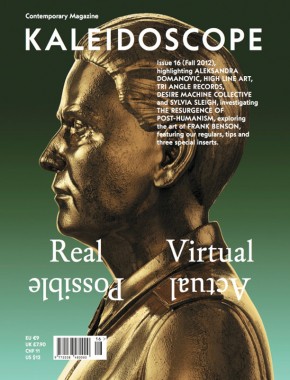
KALEIDOSCOPE Magazine 16 — Fall 2012
Softcover, 210 pp. + Ken Price Drawings insert, offset 4/4, 220 x 287 mm
ISSN 2038-4807
Published by KALEIDOSCOPE Press
$12.00 ·
At the core of a platform that includes an exhibition space and an independent publishing house, KALEIDOSCOPE is an international quarterly of contemporary art and culture founded in 2009 in Milan. Distributed worldwide on a seasonal basis, it has gained widespread recognition as a trusted and timely guide to the present (but also to the past and possible futures), unique in its interdisciplinary and unconventional approach.
HIGHLIGHTS
This issue’s opening section features Aleksandra Domanovic, whose videos and sculptures are seen by Pablo Larios as embodiments of the perpetually productive disunion of politics and art; the ambitious public art program of New York’s High Line, described by Piper Marshall as one that confronts artists with many challenges; the record label Tri Angle, whose founder Robin Carolan talks to Ruth Saxelby about how to embody the zeitgeist of electronic music; the Indian duo Desire Machine Collective, who discuss with Sandhini Poddar and Ulrich Baer about mapping an experimental history of colonization; and American painter Sylvia Sleigh, whose elusive politics is contrasted by Joanna Fiduccia to the detailed realism of her portraits.
MAIN THEME
The blend of cybernetics and underground culture realized in the symbolic and mythological repertoire of Cyberpunk continues to inspire sci-fi narratives and permeate the arts, reinforcing its status as a powerful aesthetic. This issue examines the emergence of an art that addresses the processes of mechanization, desexualisation and reification of the human body, and how they relate to questions of identity, morality and fantasy. Featured contributions include Michele D’Aurizio’s overview of the work of a new generation of artists; Karen Archey’s analysis of the work of Canadian artist David Altmejd; a discussion between Brody Condon and Jason Brown coordinated by DIS magazine; and a conversation between young artist Timur Si-Qin and influential philosopher Manuel De Landa.
MONO
Comprising an essay by Alessandro Rabottini, an interview by Matt Keegan and a photographic portrait by Grant Willing, this issue’s MONO is devoted to American artist Frank Benson, whose work rides the dialectic between the space of the photographic image and the space of sculpture. Evoking celebrated artists like Charles Ray, Jeff Koons and Robert Gober, Benson uses the latest technology available and yet imbues the sculptural process with a profound understanding of physical materiality — making works that oscillate between analogue and digital, solidity and suspension, humor and elegance.
REGULARS
Hans Ulrich Obrist interviews the New York-based provocateur Liz Magic Laser; Dorothée Dupuis introduces the hidden life of Marseille; Luca Cerizza analyzes the emotional topography of Alberto Garutti; and Carson Chan meets the DAAD’s visual arts director Ariane Beyn. The edition is enriched by our seasonal tips on following, reading, listening, stopping by, meeting and visiting; as well as by three special inserts — drawings by Ken Price, stickers by Alistair Frost and images by Alistair Frost.
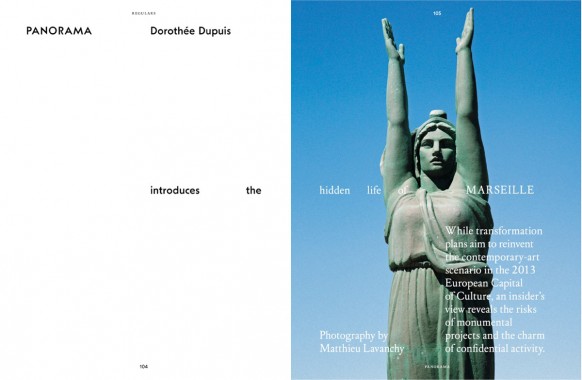
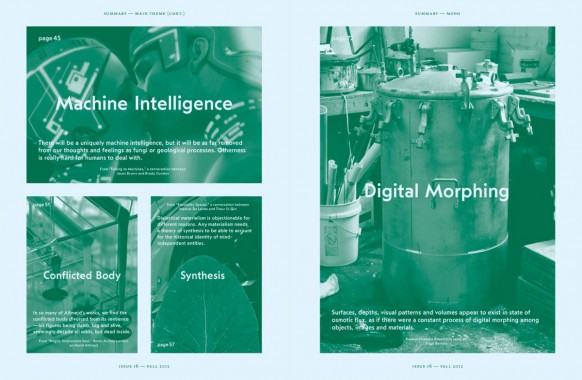
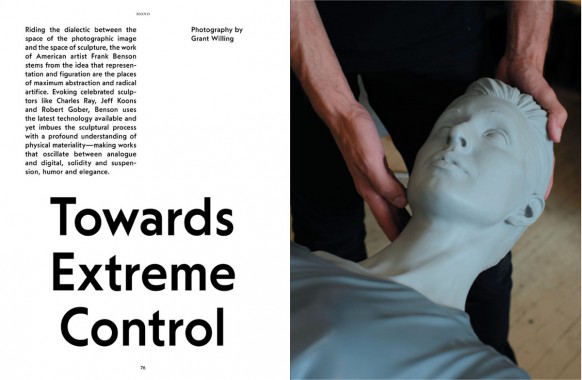
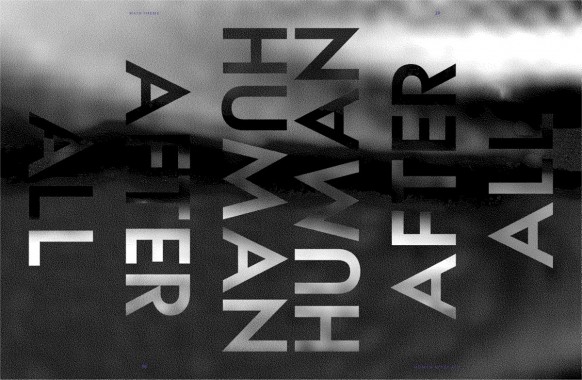
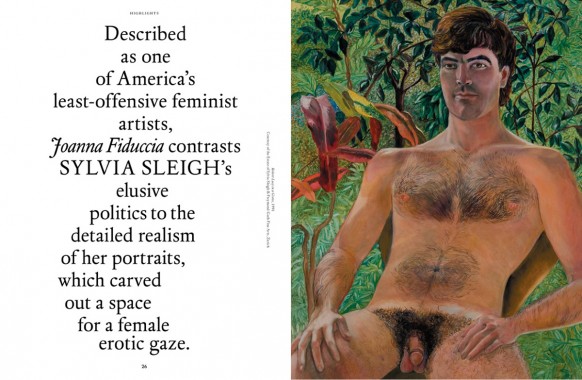
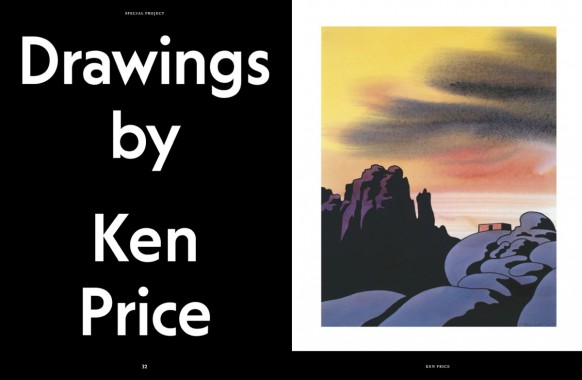
Alberto Garutti, Aleksandra Domanovic, Alessandro Rabottini, Alistair Frost, Ariane Beyn, Art, Brody Condon, Carson Chan, Charles Ray, Cyberpunk, David Altmejd, Desire Machine Collective, DIS Magazine, Distribution, Dorothée Dupuis, Drawing, Frank Benson, Grant Willing, Hans Ulrich Obrist, Jason Brown, Jeff Koons, Joanna Fiduccia, KALEIDOSCOPE Press, Karen Archey, Ken Price, Liz Magic Laser, Luca Cerizza, Manuel De Landa, Matt Keegan, Michele D'Aurizio, Pablo Larios, Piper Marshall, Robert Gober, Robin Carolan, Ruth Saxelby, Sandhini Poddar, Sculpture, Sylvia Sleigh, Timur Si-Qin, Tri Angle, Ulrich Baer
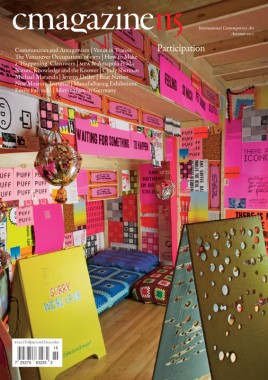
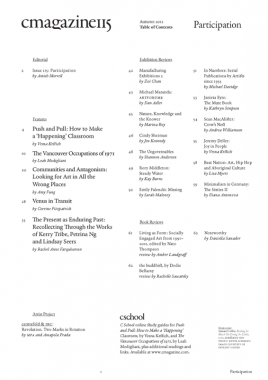
C Magazine 115, Participation
Softcover, 64 pp., offset 4/1, 210 x 295 mm
Edition of 2200
ISSN 1480-5472
Published by C Magazine
$7.50 ·
Issue 115, Participation, features essays by Vesna Krstich on how to make a ‘Happening’ classroom, Leah Modigliani on the Vancouver Occupations of 1971, Amy Fung on communities and antagonism, Rachel Anne Farquharson on recollecting through the works of Kerry Tribe, Petrina Ng and Lindsay Seers, as well as Corrine Fitzpatrick in response to our recent “Men” issue. C Magazine 115 also includes an artist project by MPA and Amapola Prada, book reviews and reviews of exhibitions by Jeremy Deller, Janieta Eyre, Emily Falencki, Sean MacAlister, Michael Maranda, Rory Middleton and Cindy Sherman, among others.
Amapola Prada, Amy Fung, Art, C Magazine, Cindy Sherman, Corrine Fitzpatrick, Culture, Distribution, Emily Falencki, Janieta Eyre, Jeremy Deller, Kerry Tribe, Leah Modigliani, Lindsay Seers, Michael Maranda, MPA, Petrina Ng, Rachel Anne Farquharson, Rory Middleton, Sean MacAlister, Vesna Krstich

Enrique Santos, The Mexican Suitcase
Softcover with flaps, 360 pp., offset 4/1, 200 x 240 x 32 mm
English and Spanish
Edition of 2000
ISBN 978-607-7636-29-8
Published by Landucci
$45.00 ·
The Mexican Suitcase is the result of more than three years of work by the Mexican-based Argentinian artist, Enrique Santos. This artist book could be, amongst other things, a ‘catalogue’ of an apocryphal exhibition that is not meant to be, one that from its very beginning proposes a reverse path to that already established — first the book, and then? Ever since this basic wink (not to mention that the title itself is an appropriation) Enrique Santo’s work addresses the idea of “robbery”. Using diverse languages and tools (photography, collage, video, sculpture, film, installations) the artist reflects upon the contemporary artistic works in a sociocultural and political environment of violence in which we find ourselves immersed. Robbery as a metaphor of appropriation and “postproduction” — in Bourriaud’s definition of the word — as an element specific of an artistic way of producing, that is loaded with intertextuality, reference, discourse and images that roam our daily lives.
Santos’ work is a way of thinking about how contemporary art is produced, and at the same time it talks about the gaze, the interpretation of he/she who observes, the understanding and production that comes with every look. It reflects upon a single active spectator, who builds a discourse, appropriates all meanings and elaborates on them according to his life story, and his social, cultural and emotional capital. That gaze has a filter through which history is interpreted. It talks about and with the viewer without underestimating his capacity for understanding. From the very beginning, the book presents a relationship of shared complicity, discourse, codes and understandings, but demands a lucid and imaginative perspective.
Retaking film, journalistic, documentary and advertising language, Santos quotes and reinterprets the great thieves of the screen and some real criminals, in order to talk about lies, confusions, myths and misunderstandings, as well as an ever more violent and heartbreaking reality that crawls into our lives through trivialized and shallow images.
— Florencia Magaril
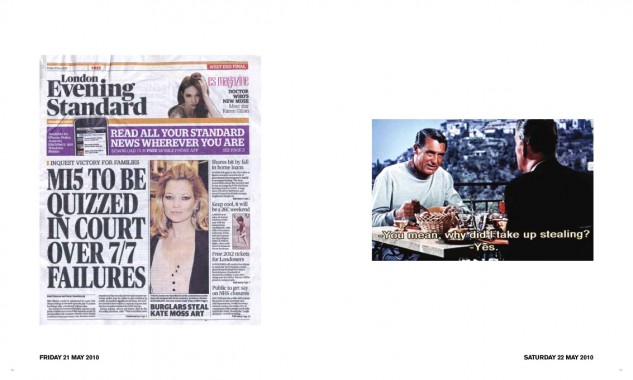
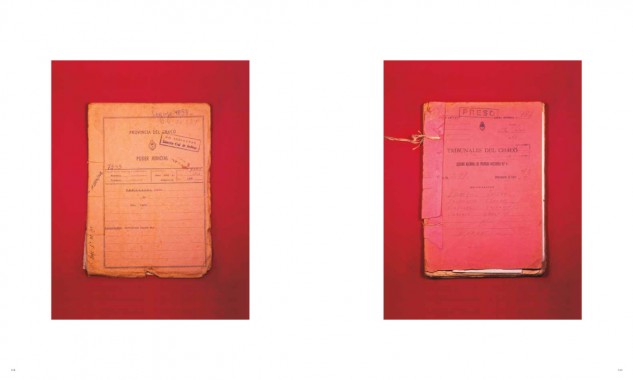
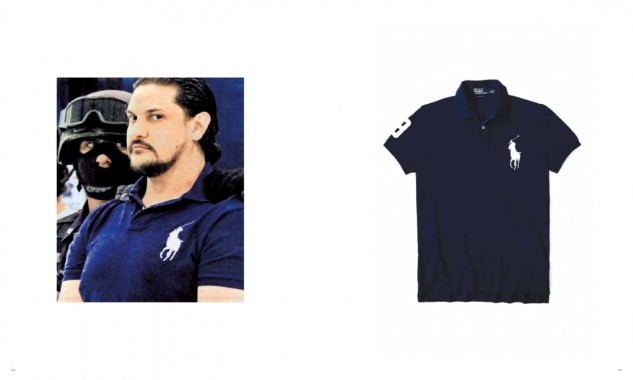
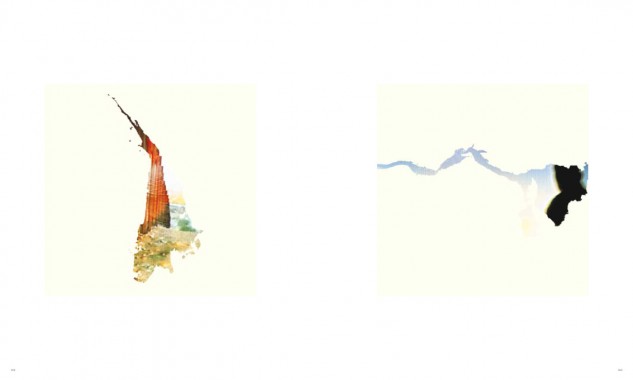
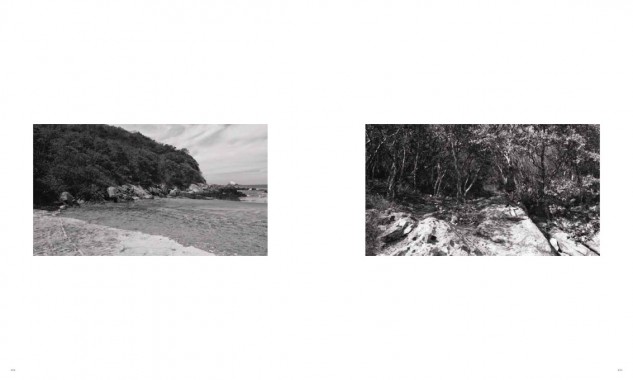
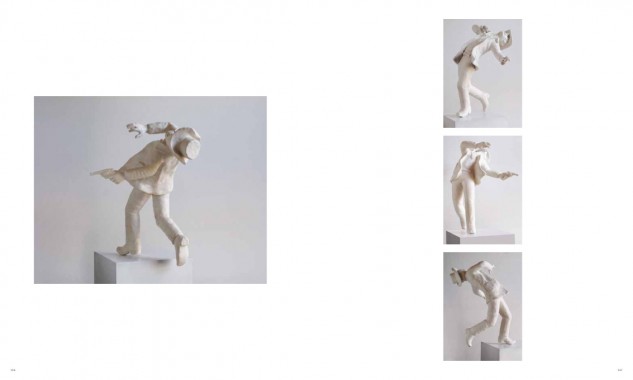
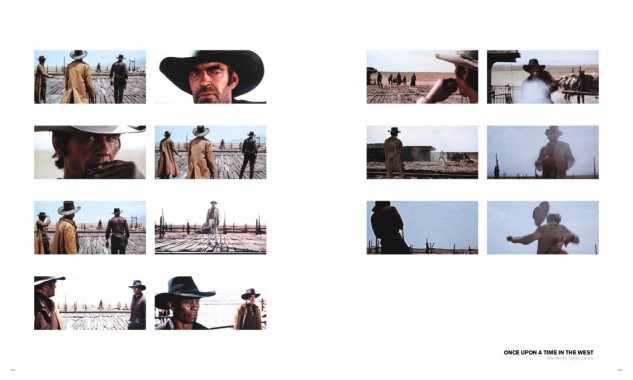
Aaron Smuts, Antonieta Cruz, Art, Deleuze & Guattari, Distribution, Edward Said, Enrique Santos, Film, Florencia Magaril, Gilberto Salinas, Goya, Graham Huggan, Guadalajara, Jalisco, Jean-Luc Goddard, Jorge Luis Borges, Landucci, Marshal McLuhan, Mexico, Pepe Montelongo, Photography, Randy Kennedy, Roland Barthes, Roman Gubern, Sculpture, Tera Patrick, Werner Herzog
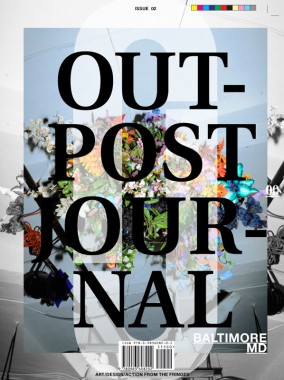
Outpost Journal 2, Baltimore
Softcover, 64 pp. + insert, offset 4/4, 9 x 12 inches
Edition of 500
ISBN 978-0-9836082-1-9
Published by Outpost Journal
$15.00 ·
Outpost is an annual print publication on art, design and community action from cities that have been traditionally underexposed beyond their local contexts. Each beautifully produced and visually engaging issue of Outpost focuses on a single urban location and comes packaged with a limited edition print by an artist from the featured city. Outpost is a journey into the creative heart of a place, and via features like “Secretly Famous” (profiles of the most infamous artsy locals), guerrilla engagements with tourist attractions, historical explorations, mapping projects, and deep dives into artist collectives and organizations, Outpost exposes the myriad ways in which unique local communities arise through creative collaboration and production.
Exploratory and playful, critical with a sense of levity, and inspired by hand-drawn maps, flags, totem poles, poorly pixelated iPhone photos, moody landscapes, and the spirit of adventure, Outpost is dedicated to strengthening ties between communities and spreading new ideas about how creative culture can change our world.
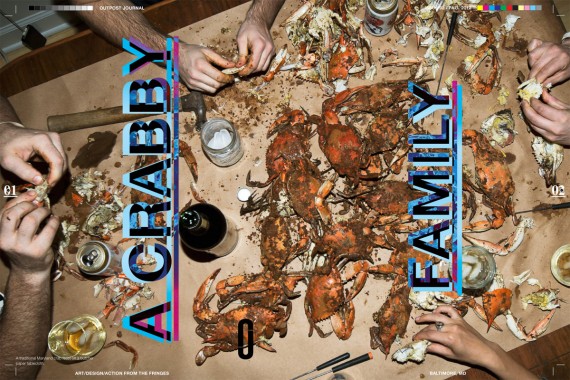
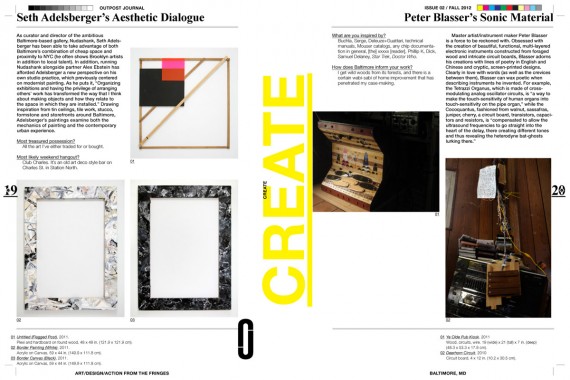
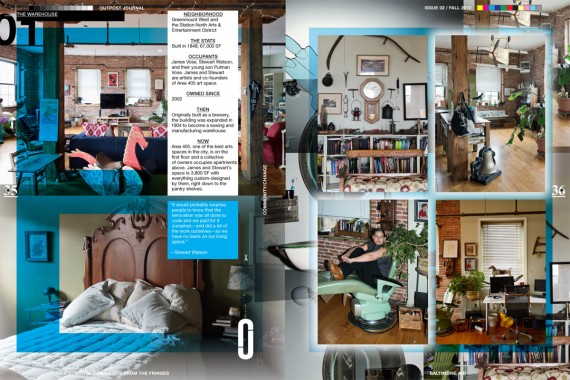
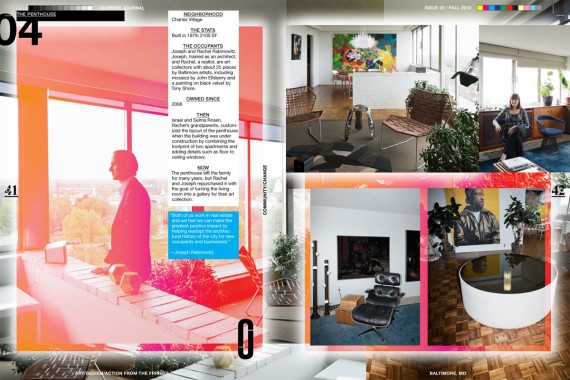
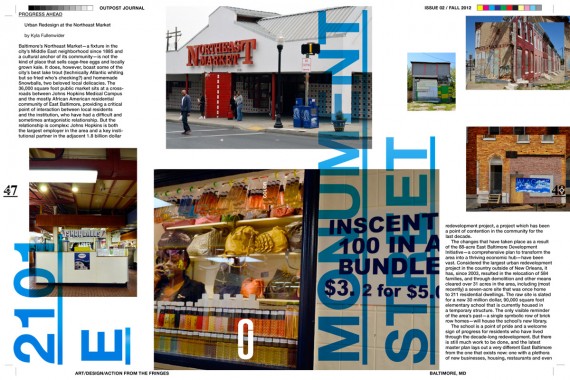
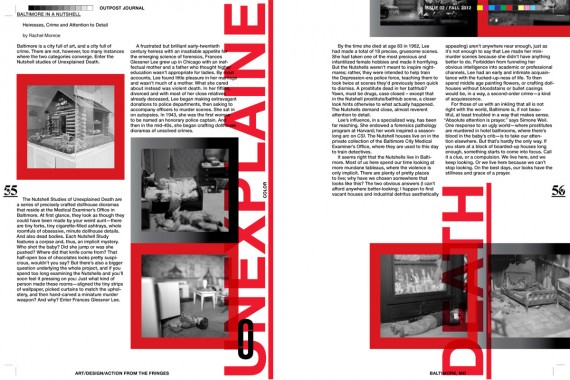
Aja Blanc, Alex Kwartler, Anusha Venkataraman, Architecture, Art, Boddan Mohora, Bogdan Mohora, Caitlin Cunningham, Carly Ptak, Clay Rockefeller, Culture, Dan Deacon, Design, Distribution, Elizabeth Evitts Dickinson, Gary Kachadourian, Gillian Kiley, James Rieck, Jay Peter Salvas, Jeanne Vaccaro, John Bohl, Jori Ketten, Kyla Fullenwider, Laure Drogoul, Lesser Gonzalez Alvarez, Loring Cornish, Luke T. Baker, Maggie Lange, Manya Rubinstein, Matthew Williams, Mike Taylor, Outpost Journal, Patrick Casey O'Brien, Pete Oyler, Peter Blasser, Phoebe Jean, Phoebe Jean Dunne, Rachel Monroe, Seth Adelsberger, Shaun Flynn, Twig Harper
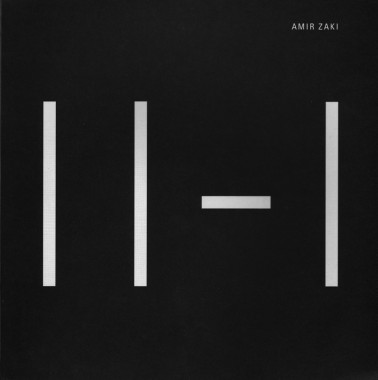
Amir Zaki, Eleven Minus One
Softcover, 122 pp., offset 4/4, 9 x 9 inches [26 x 36 inches unfolded]
Edition of 500
ISBN 978-0-26172-2-9
Published by LAXART
$75.00 ·
For this project,
Amir Zaki carefully reconstructed and reinterpreted, in virtual 3D space, several photographs from a series made in the mid-1980’s by Swiss artist duo Peter Fischli and David Weiss. Their photographs depict precariously balancing temporary sculptures that they intentionally constructed in a slap-dash manner. Their photographs of these sculptures were casually shot in their studio using unprofessional lighting and equipment. Through these photographs of temporary sculptural constructs made of household detritus, Fischli and Weiss subvert the idea of sculpture as a heroic manifestation of a unique and masterfully constructed object. Their work privileges the document over the sculpture, which Zaki interprets as an ironic inverse of the ubiquitous professional photographic documentation of the ‘serious’ sculpture found in so many art books and journals. In Zaki’s adaptation of their work, there is a re-inversion at play as he privileges the sculpture again, but only as a 3D virtual non-object in order to destabilize their relationship. This has manifested as a series of short photorealistic animation loops and a foldout book based on the eleven different ways that a cube can be unfolded. Working with this methodology allowed Zaki to further interrogate the conventions and limitations of photography by exploring depictions of ‘real’ space, but without the restraints of actual physics or forces such as gravity. Zaki is interested in the perversion of using Fischli and Weiss photographs of quickly made, throw-away sculptures as a source to create an incredibly laborious photorealistic virtual 3D scene that can be explored from all angles, both through photographic and orthographic projections. In this project Zaki has also fetishized the sculptures by making them virtual, stylized and idealized. He has resurrected these sculptures and placed them in a world where they need not ever ‘fall’ (fail). In the animations Zaki has created, the sculptures simply spin, teeter or gyrate indefinitely. In the photographs Zaki has rendered for the book, the sculptures hover in a perfect orthographic projection space, surrounded by a black void.
The book is a complex foldout design that is quite difficult to describe in text. It is ten double-sided square pages. Each page spread unfolds into unique configurations of six squares that represent all sides of a cube. The images on each unfolded page spread depict 3D digital recreations of photographs from the series Equilibres by Swiss artist duo Peter Fischli and David Weiss. When fully unfolded, the book opens up to approximately 27 x 36 inches. It is an interactive object, and can be folded and unfolded in multiple ways, creating grids, cubes, and unfolded boxes, each creating a unique experience and juxtaposition of images. It is important to recognize the book in terms of a limited edition or a multiple. It is also more of an object with sculptural qualities and a tactile nature than a ‘book’ in the traditional sense.
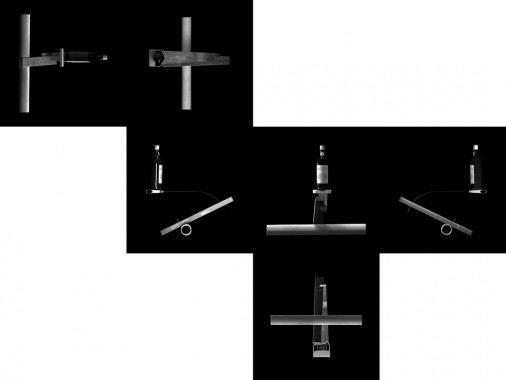
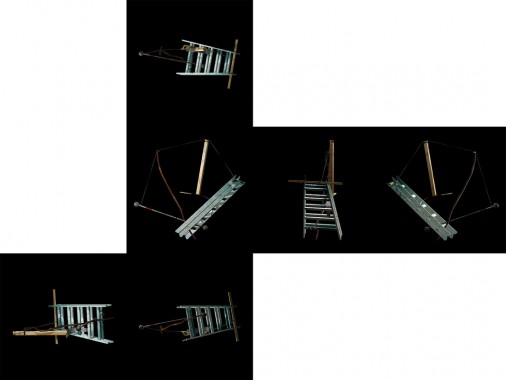
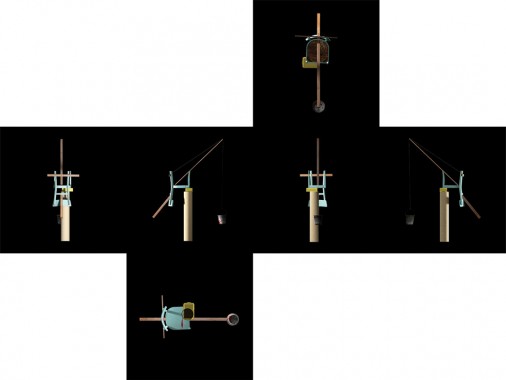
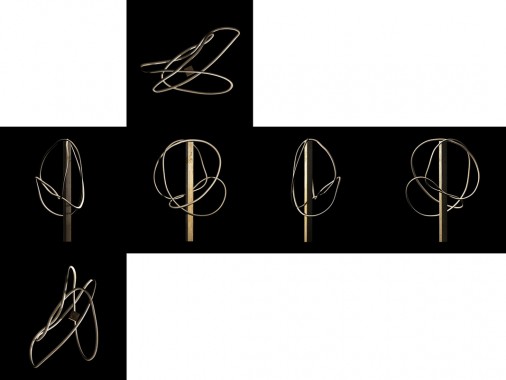
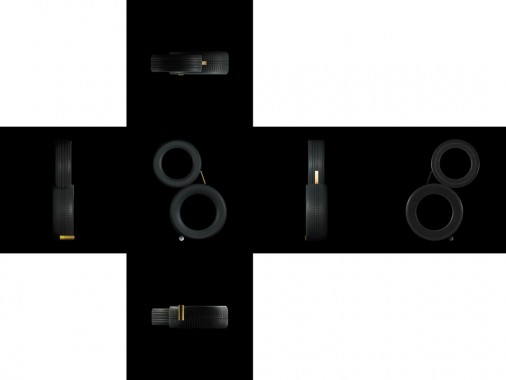
Amir Zaki, Art, David Weiss, Distribution, Eighth Veil, Greenblatt-Wexler, LAXART, Peter Fischli, Photography, Sculpture
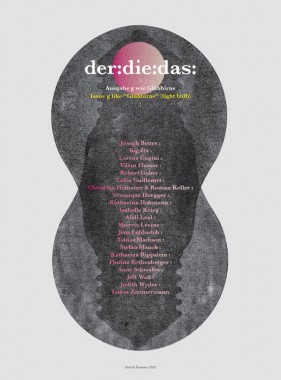
der:die:das:, Issue g like glühbirne (light bulb)
Softcover, 92 pp., offset 4/1, 200 x 270 mm
English and German
Edition of 1000
ISSN 1663-2508
Published by der:die:das:
$20.00 ·
Some words on, and images of, glühbrine (light bulb). Featuring: Joseph Beuys, Big Zis, Lorenz Cugini, Vilem Flusser, Robert Gober, Colin Guillemet, Christina Hemauer, Roman Keller, Veronique Hoegger, et al.
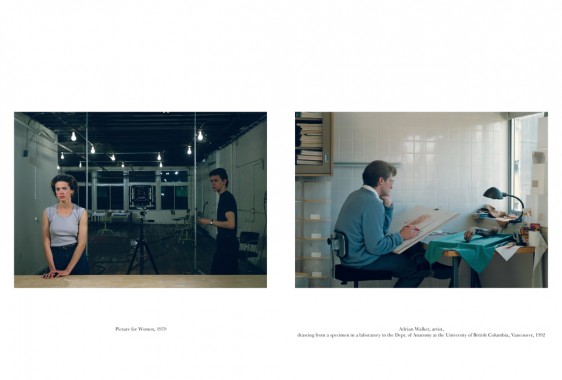
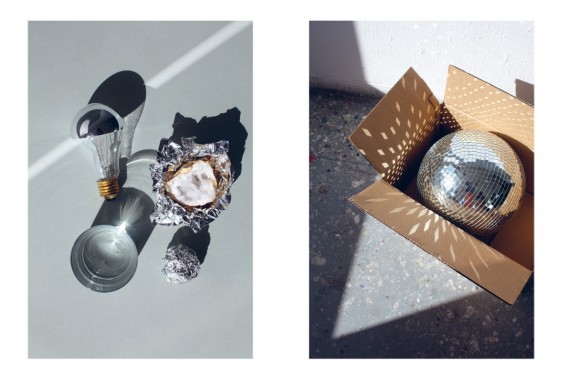
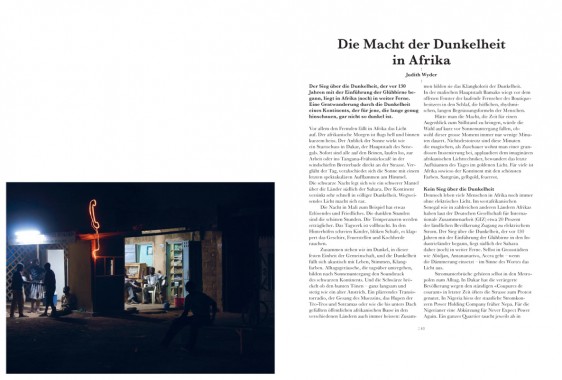
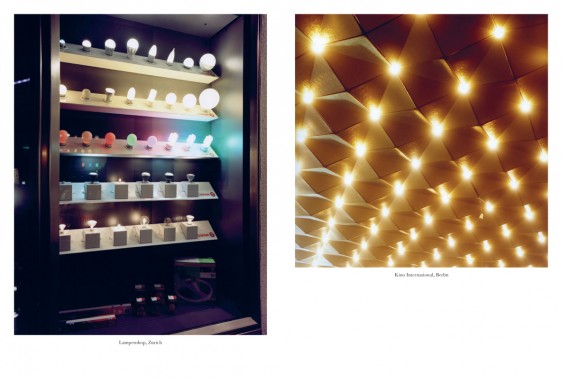
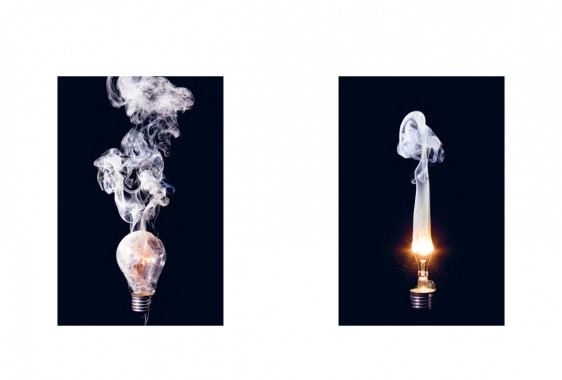
Aleli Leal, Anne Schwalbe, Art, Big Zis, Christina Hemauer, Colin Guillemet, Culture, der:die:das:, Distribution, Flurina Rothenberger, Isabelle Krieg, Jeff Wall, Jens Lubbadeh, Joseph Beuys, Judith Wyder, Katharina Hohmann, Katharina Rippstein, Lorenz Cugini, Lukas Zimmermann, Photography, Robert Gober, Roman Keller, Sculpture, Sherrie Levine, Stefan Mauck, Tobias Madison, Veronique Hoegger, Vilem Flusser
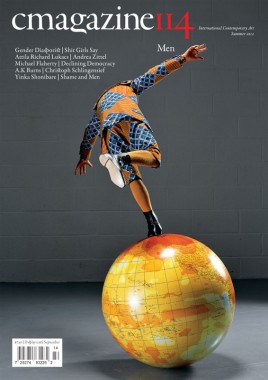
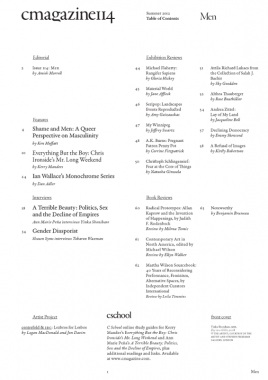
C Magazine 114, Men
Softcover, 64 pp., offset 4/1, 210 x 295 mm
Edition of 2200
ISSN 1480-5472
Published by C Magazine
$7.50 ·
Issue 114, Men, includes essays by Ken Moffatt on male shame, Kerry Manders on Chris Ironside’s Mr. Long Weekend, Dan Adler on Ian Wallace’s Monochrome Series, an interview with Tobaron Waxman by Shawn Syms, and Ann Marie Peña in conversation with Yinka Shonibare. C Magazine 114 also includes Lezbros for Lesbos, an artist project by Logan MacDonald and Jon Davies, exhibition reviews of Michael Flaherty, A.K. Burns, Christoph Schlingensief, Attila Richard Lukacs, Althea Thauberger and Andrea Zittel, and book reviews.
A.K. Burns, Althea Thauberger, Andrea Zittel, Ann Marie Peña, Art, Attila Richard Lukacs, C Magazine, Chris Ironside, Christoph Schlingensief, Culture, Dan Adler, Distribution, Ian Wallace, Jon Davies, Ken Moffatt, Kerry Manders, Logan MacDonald, Michael Flaherty, Shawn Syms, Tobaron Waxman, Yinka Shonibare
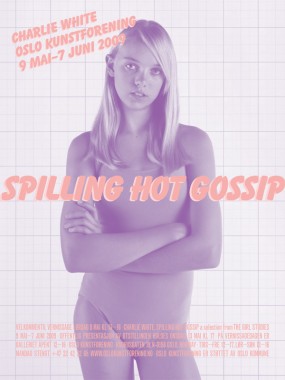
Charlie White, Spilling Hot Gossip
Poster, 100 lb matte coated paper, offset 2/0, 18 x 24 inches
Edition of 500
Unsigned, unnumbered
Published by Oslo Kunstforening
$12.00 ·
Collaboration with
Charlie White and design of poster/take away for the exhibition
Spilling Hot Gossip a selection from
The Girl Studies at
Oslo Kunstforening.
“Portraiture has always been motivated by two competing and overlapping desires: the desire to record, and the desire to be recorded. Artists Katy Grannan and Charlie White have examined this tension, exploring concepts of identity and subjectivity in a world increasingly dominated by media representations of the ideal self. The Sun and Other Stars presents two bodies of work that map the fragility and resilience of individuality in contemporary Western culture.
Grannan’s unflinching portraits capture adult subjects along the sun-struck boulevards of the American West, transforming them from obscurity to individuality with pathos and candor. White’s series of blonde teenage girls frames the popular and tyrannical appetite for celebrity with a deadpan lack of sentimentality. These two photographic series, accompanied by Grannan’s first film project and White’s new animation and personal collections of mass-culture ephemera, provide a visual vocabulary for an examination of the human subject and the encumbering effect of desire and aspiration.”
— Britt Salvesen, The Sun and Other Stars: Katy Grannan and Charlie White
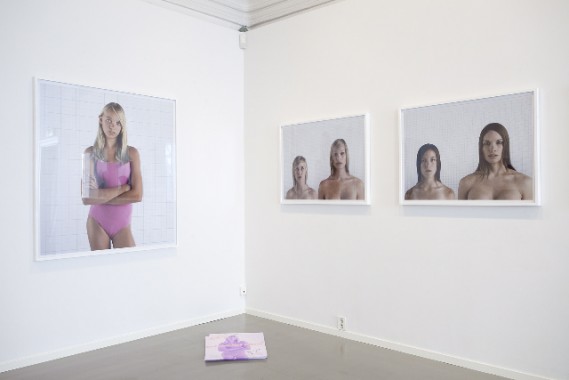
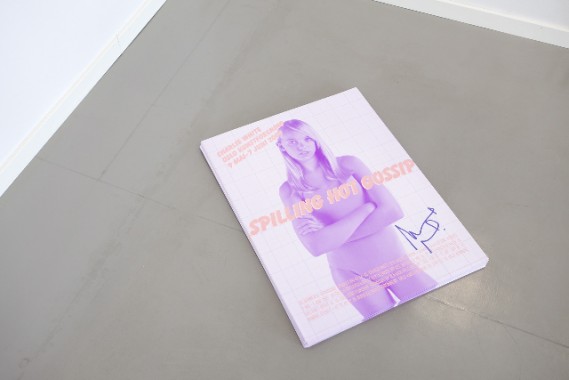
Art, Britt Salvesen, Charlie White, Distribution, Jonathan Maghen, Katy Grannan, Oslo Kunstforening, Photography, Posters, Textfield, Typography
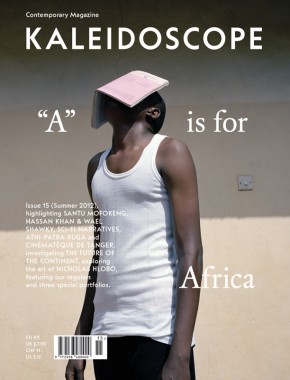
KALEIDOSCOPE Magazine 15, “A” is for Africa
Summer 2012 — Africa Special Edition
Softcover, 202 pp., offset 4/4, 220 x 287 mm
ISSN 2038-4807
Published by KALEIDOSCOPE Press
$12.00 · out of stock
Editor-in-Chief Alessio Ascari and art directors OK-RM are pleased to announce that KALEIDOSCOPE’s summer issue is a special edition entirely devoted to art produced in (or related to) the African continent today. In a time when the once-dominant western model is collapsing, the impressive growth of Africa’s economies looks likely to continue and its cultural offer is growing more and more vibrant, exposing the international audience to an incredible offering of art, music, architecture, film, design and fashion. This issue intends to be the most up-to-date and thorough exploration of the African scene of contemporary art and culture, from Egypt to South Africa via Ethiopia and Nigeria, conducted in collaboration with a dream team of both international contributors and influential thinkers and practitioners working in and around Africa today.
HIGHLIGHTS
Santu Mofokeng by Philippe Pirotte; Hassan Khan and Wael Shawky by Shahira Issa; Sci-Fi Narratives by Nav Haq and Al Cameron; Athi-Patra Ruga by Linda Stupart; Cinématèque de Tanger by Omar Berrada.
MAIN THEME — The Future of the Continent, Continent of the Future
Art by Nana Oforyatta-Ayim; Cinema by Olufemi Terry, Frances Bodomo, Jean-Pierre Bekolo and Mahen Bonetti; Music by Benjamin Lebrave; and Urban Planning by Antoni Folkers.
MONO — Nicholas Hlobo
Interview by Sean O’Toole; Essay by Tracy Murinik; Focus by Liese van deer Watt.
REGULARS
Futura: Lynette Yiadom-Boakye by Hans Ulrich Obrist; Panorama: Invisible Borders by Emmanuel Iduma; Souvenir d’Italie: Massimo Grimaldi by Luca Cerizza; On Exhibitions: “African Negro Art” by Paola Nicolin; Producers: Elvira Dyangani Ose by Carson Chan.
SPECIAL PORTFOLIOS
Viviane Sassen, Rotimi Fani-Kayode and Namsa Leuba.
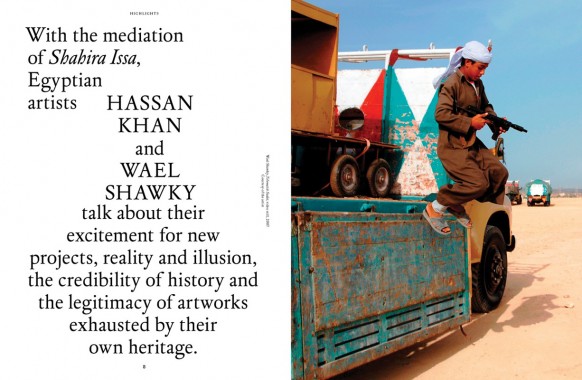
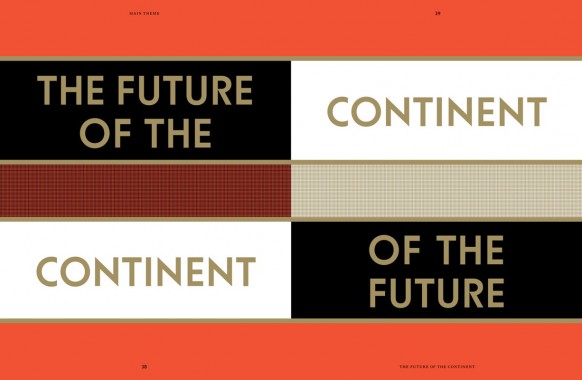
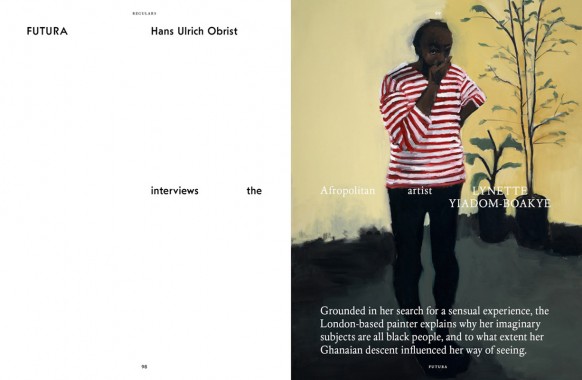
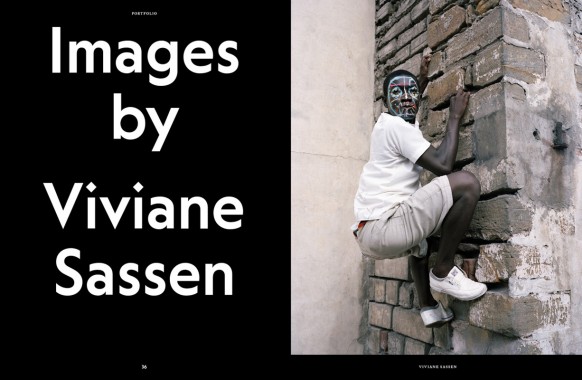
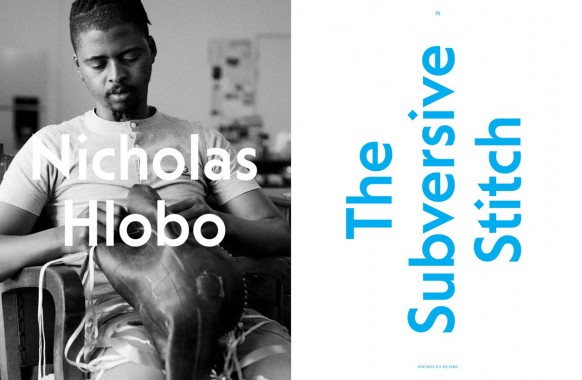
Africa, Al Cameron, Antoni Folkers, Architecture, Art, Athi-Patra Ruga, Benjamin Lebrave, Carson Chan, Cinématèque de Tanger, Distribution, Elvira Dyangani Ose, Emmanuel Iduma, Film, Frances Bodomo, Hans Ulrich Obrist, Hassan Khan, hen Bon, Jean-Pierre Bekolo, KALEIDOSCOPE Press, Liese van deer Watt, Linda Stupart, Luca Cerizza, Lynette Yiadom-Boakye, Mahen Bonetti, Massimo Grimaldi, Namsa Leuba, Nana Oforyatta-Ayim, Nav Haq, Nicholas Hlobo, OK-RM, Oliver Knight, Olufemi Terry, Omar Berrada, Paola Nicolin, Philippe Pirotte, Rory McGrath, Rotimi Fani-Kayode, Santu Mofokeng, Sean O'Toole, Shahira Issa, Viviane Sassen, Wael Shawky
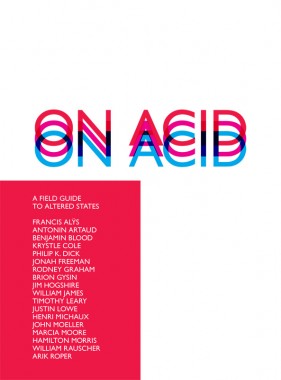
William Rauscher and John Moeller, On Acid
A Field Guide to Altered States
Softcover, 100 pp., offset 4/3, 200 x 265 mm
Edition of 1000
ISBN 978-0-615-53398-8
Published by CCC
$15.00 ·
On Acid presents a radically subjective re-edit of the history of drug experience, following the emergence of drugs as a technology and modernity’s conflicted obsessions with altered states. Tracing a path beginning with philosopher Benjamin Blood’s 1874 pamphlet ‘The Anesthetic Revelation and the Gist of Philosophy’ which declares the existence of a ‘majesty and supremacy unspeakable’ observable only after being dosed by nitrous oxide,
On Acid assembles texts and images that draw a line connecting archival works by William James, Antonin Artaud, Timothy Leary, and various modernist explorers, to the practice of contemporary artists such as Rodney Graham, Francis Alÿs, Jonah Freeman and Justin Lowe. Removed from the familiar cultural contexts of Haight-Ashbury and Grateful Dead psychedelia,
On Acid is in itself an experimental program, a recursive acidic process that mirrors the deconstructive relations to counterculture cultivated in contemporary art. The book concludes with a series of new conversations with Freeman and Lowe, Hamilton Morris and Arik Roper.
TEXTS
Francis Alys, Antonin Artaud, Benjamin Blood, Philip K. Dick, Rodney Graham, Brion Gysin, Dr. Albert Hofmann, Jim Hogshire, Aldous Huxley, International Federation for Internal Freedom, William James, Timothy Leary, Marcia Moore, William Rauscher, Alan Watts.
IMAGES
Brian Aldiss, Francis Alys, Carol Bove, Syd Barrett, Mathieu Briand, Krystle Cole, Jonah Freeman and Justin Lowe, Allen Ginsberg, John Giorno, Rodney Graham, Brion Gysin, Carsten Holler, Henri Michaux, John Moeller, Arik Roper, Sandoz Laboratories, Ettore Sottsass, Klaus Weber.
INTERVIEWS
Justin Lowe and Jonah Freeman, Hamilton Morris, Arik Roper.
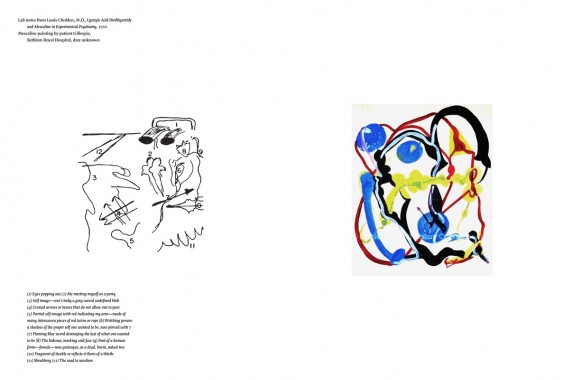
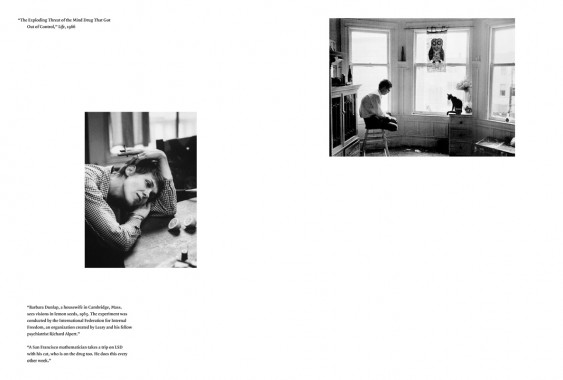
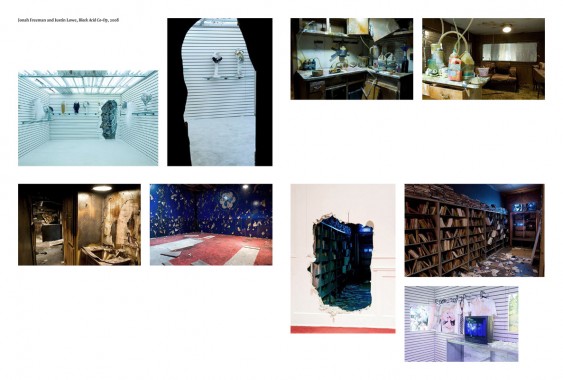
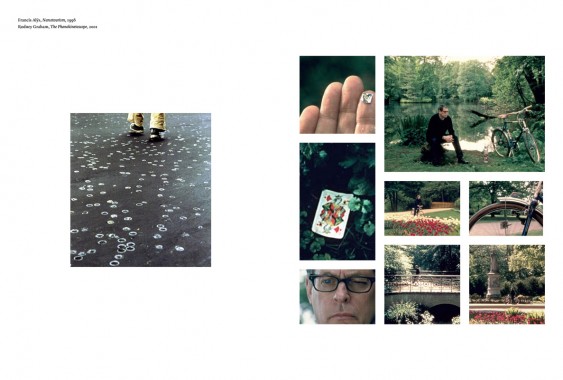
Alan Watts, Aldous Huxley, Allen Ginsberg, Antonin Artaud, Arik Roper, Art, Benjamin Blood, Brian Aldiss, Brion Gysin, Carol Bove, Carsten Höller, CCC, Criticism, Culture, Distribution, Dr. Albert Hofmann, Ettore Sottsass, Francis Alys, Hamilton Morris, Henri Michaux, International Federation for Internal Freedom, Jim Hogshire, John Giorno, John Moeller, Jonah Freeman, Justin Lowe, Klaus Weber, Krystle Cole, Marcia Moore, Mathieu Briand, Philip K Dick, Philosophy, Psychedelia, Rodney Graham, Sandoz Laboratories, Syd Barrett, Theory, Timothy Leary, William James, William Rauscher
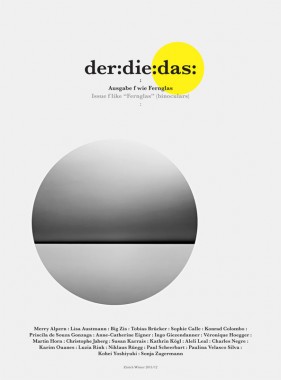
der:die:das:, Issue f like fernglas (binocular)
Softcover, 96 pp., offset 4/1, 200 x 270 mm
English and German
Edition of 1000
ISSN 1663-2508
Published by der:die:das:
$22.00 ·
Some words on, and images of, fernglas (binocular). Featuring: Merry Alpern, Big Zis, Tobias Brücker, Sophie Calle, Anne-Catherine Eigner, Ingo Giezendanner, Charles Negre, Niklaus Rüegg, Paul Scheerbart, Kohei Yoshiyuki, et al.
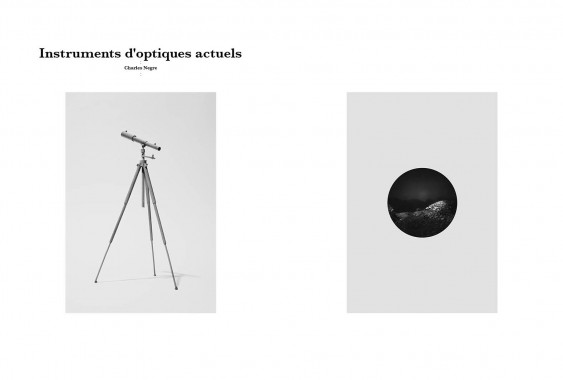
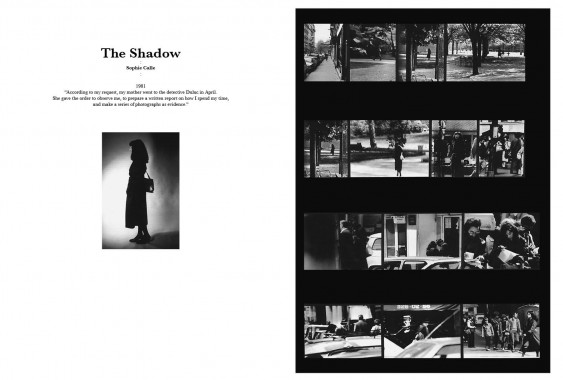
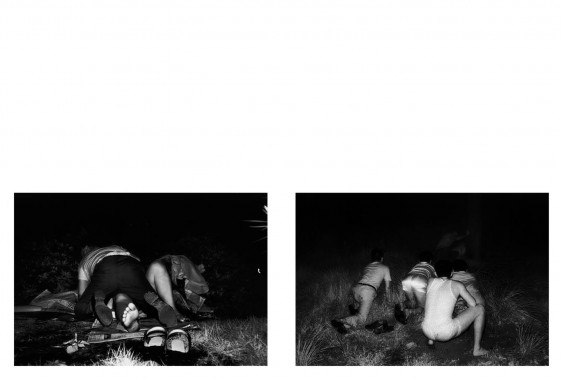
Aleli Leal, Anne-Catherine Eigner, Art, Big Zis, Carl Zeiss, Charles Negre, Christophe Jaberg, Culture, der:die:das:, Distribution, Hin Van Tran, Ingo Giezendanner, Kathrin Kogl, Kohei Yoshiyuki, Konrad Colombo, Lisa Austmann, Luzia Rink, Martin Horn, Merry Alpern, Nadja Aebi, Niklaus Rüegg, Pascal Christoph Tanner, Paul Scheerbart, Paulina Velasco Silva, Photography, Priscila de Souza Gonzaga, Sonja Zagermann, Sophie Calle, Susan Karrais, Tobias Brücker, Veronique Hoegger
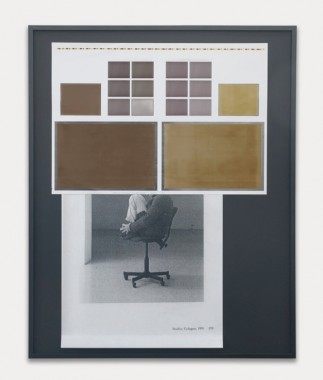
Running Sheet and Artist Portrait; Chromogenic and Offset Prints, 2012
Phil Chang — Studio, Affect
7 July – 11 August 2012
Opening reception: Saturday, 7 July 2012, 7-9pm
Pepin Moore
933 Chung King Rd.
Los Angeles, CA 90012
Pepin Moore is proud to present
Studio, Affect, an exhibition of new works by
Phil Chang, on view from 7 July through 11 August 2012. A reception for the artist will be held Saturday, 7 July from seven to nine in the evening.
As his third and final project that examines the various implications of affect, Phil Chang includes works in Studio, Affect that obliquely address the role of the studio in contemporary culture. Studio, Affect includes various depictions of artist’s studios — photographs of book pages depicting Francis Bacon’s disheveled space, Giacometti in his studio studying his wife, Richter sitting on an office chair — alongside images from catalogs that rely on tropes of the studio. Also included are images Chang has produced which depict his own production. These include photographs of laser prints that have served as studies, and the running sheets (offset prints) from the production of his artist book from 2010. In total, Studio, Affect relies on an array of images presented in an array of formats — chromogenic prints, silver gelatin prints, laser prints, pigment prints, stencil prints, and offset prints — that are hinged within frames. This decision has to do with a desire for “looseness” in presentation that formally and structurally addresses the political and economic implications of the studio.
Art, Chinatown, Exhibitions, Francis Bacon, Jonathan Maghen, Los Angeles, Pepin Moore, Phil Chang, Photography, Studio
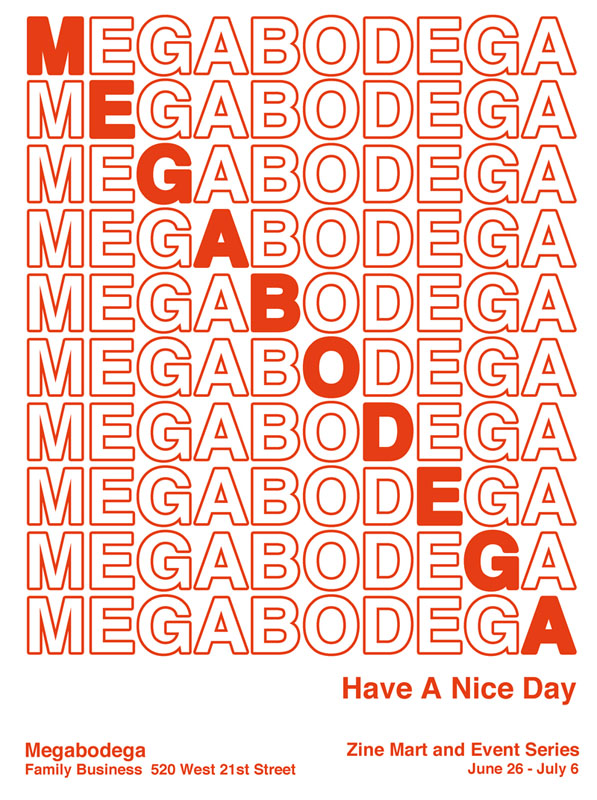
Megabodega
Zine Mart and Event Series
June 26 — July 6, 2012
Organized by Victoria Yee Howe
Family Business
520 West 21st St.
New York, NY 10012
200+ art books and magazines for sale; nightly book launches and parties; toll-free 24/7 Megabodega Hotline with new curated guest recordings daily.
Grand Opening: Tuesday, June 26, 7-10pm
Music by DJ Joro-Boro
Drinks provided by Macao Trading Co.
Family Business is the big brother of the Wrong Gallery, a minuscule space that Maurizio Cattelan, Massimiliano Gioni and Ali Subotnick ran in New York from 2002 to 2005. Just like the Wrong Gallery, Family Business is a non-profit space open to experimentation and irreverent exhibition formats.
Ali Subotnick, Art, Family Business, Massimiliano Gioni, Maurizio Cattelan, Megabodega, Victoria Yee Howe, Wrong Gallery

























































